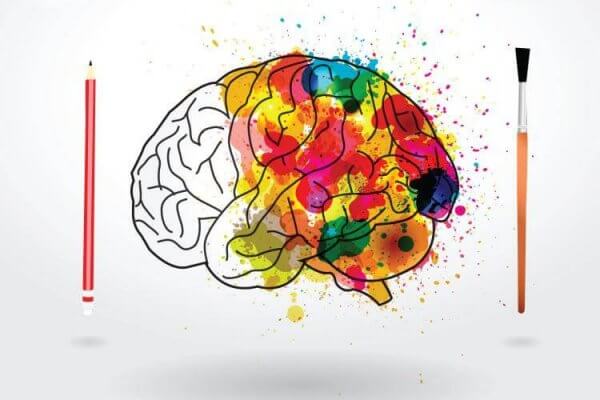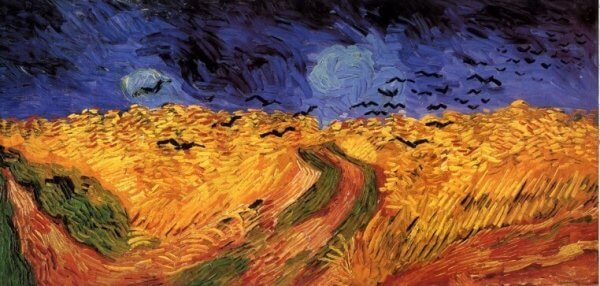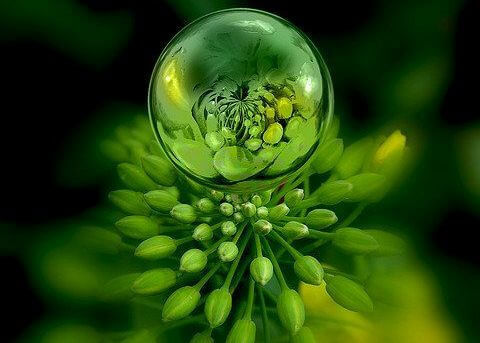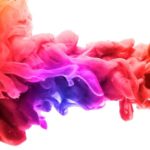Talking about the psychology of colors means talking about emotions. Colors are languages that are able to evoke pleasure, happiness, restlessness and energy .
It is more than just marketing. Colors are rooted in personal experiences, in our childhood, and in the symbolism that science and psychology have sought to elucidate.
Claude Monet used to say that the world of colors was his daily obsession, his joy – and also his suffering. It’s not easy for an artist to capture the subtlety of every shade and color combination, it’s even harder to determine how each color has an impact on people and human behavior.
“What is man in front of the world of colors? The world of colors is bigger than human emotions. ”
-Juan Ramon Jimenez-
Some see it as a sham, and there is truth to it as well. For one thing we are aware of, namely that colors have a lot to do with our personal preferences, our experiences, our upbringing and even our cultural differences.
And here, however, is perhaps the most interesting idea of all, namely, there are several studies on how people react to certain colors, and which colors are the most popular.
One of the most interesting books on this subject is “Psychology of Color: how colors act on feelings and Logic ” by Eva Heller, a psychologist, sociologist, and professor of communication theory .
This interesting work is the result of several years of research and observation, which contains really interesting information that coincides with other studies conducted before him and also after him.
Interestingly, here’s one conclusion: on average, the most popular color is blue.

The psychology of color: what is its meaning?
Colors really stimulate our brains in many different ways. The ancient Egyptians and Chinese combined the effect of colors to heal and encourage some states of consciousness and emotion.
For the Egyptians, for example, red meant life, land, victory, and also the wrath of hostile gods such as Seth and Apep.
Basically, color is much more than just an optical phenomenon. Each color has its own meaning. All colors have their own particular effects on our brains, and that is why the psychology of colors today is a thorough and essential tool in neuromarketing.
Understanding how a consumer reacts to certain color stimuli can lead to higher sales. While this is not always 100% true, we can see reactions that show us that the psychology of color is indeed helpful.
In the same way, we cannot forget the influence of colors in the world of art and film. David Lynch, for example, is a director obsessed with escaping the world of logic by immersing himself in a subtle kaleidoscope of emotions.
He always uses the contrast of black and white in his productions, as he says it symbolizes an escape from the real world to the dream world.
“Colors directly affect the soul . The colors are like a keyboard, the eyes are percussion, and the soul is a piano in multiple languages. An artist is a hand that plays, touching one or the other contact appropriately, creating vibrations in the soul. ”
-Wassily Kandinsky-
Van Gogh also chose certain shades thoughtfully, to express his emotional state, leaving more and more vivid shades of yellow and blue and thus giving shape to his fields and starry nights.

What each color means and what they can do
Let us now dive into the psychology of colors. We look at the research done by Eva Heller in her book, as well as the current work of psychologist and Stanford Professor Jennifer Aaker. He recently wrote an interesting analysis of the colors used in the world of neuromarketing.
Blue
- Blue is the most widely used color in offices and the business world, due to its productivity and how non-intrusive.
- Blue is a color that refers to the reliability of a brand.
- Blue has been proven to suppress appetite, so it should not be used to promote food.
- Blue is the color of harmony, reliability and sympathy .
- Blue is the coldest of colors, but still it is associated with spirituality and fantasy.
- There are 111 different shades of blue.
- Blue is the primary color, and for painters, the most common shade of blue is “sea blue.” Marine blue is the most expensive color, but it gives their paintings exceptional liveliness.
Red
- Red is one of the most used colors in marketing: it stands out from other colors, it is pleasant, and it is used to attract attention.
- Red raises people’s heart rate and creates a sense of urgency, danger or immediacy.
- It is used to stimulate appetite and encourage impulse purchases.
- Red reflects both love and hate.
- Red is the color of kings, joy and danger.
- It reflects blood and life.
- It’s a dynamic, seductive color that is able to evoke our most aggressive side.

Yellow
- In marketing, it reflects optimism and youth.
- Yellow reflects the clarity often used to draw attention to certain products on the shelf.
- It should not be used too much in shops as it will make our eyes tired. For this reason, yellow is often used on outer shelves instead of being used on the middle shelves of a store.
- Some studies show that deep shades of yellow make babies cry.
- For color psychology experts, yellow is a contradictory color: it represents both good and evil, optimism and envy, understanding and deception.
- Yellow illustrates and favors creativity.
- Yellow is a masculine color, and in China it represents loyalty.
Green
- Green is the color of growth, renewal and rebirth.
- Green is associated with health, nature, freshness and peace.
- Green helps solve problems and encourages freedom, repentance and peace.
- Dark green reflects money, economic affairs and bourgeoisie.
- There are more than 100 shades of green, and those closer to the center act as mood lifters.
- Green also represents budding love.
- Green is a color that helps us relax. Green is actually a good color for those who suffer from depression.

Black
- Black is usually associated with elegance, mystery, mystery, and also power.
- Black evokes strong emotions and is a truly authoritative color.
- In the fashion world, black is considered stylish and is a sophisticated color.
- There are over 50 different shades of black.
- It also symbolizes the end of something: death, loss.
- In the past, black used to represent priests, and now it represents conservative people.
- In the world of physics, black absorbs 100% of direct light, and therefore does not reflect any length of spectrum, and for this reason throughout history, black has been associated with danger and evil.
“A person can speak poetically as long as he matches the colors well, just as a person can also say comforting things in music.”
-Van Gogh-
White
- In the psychology of color, white symbolizes innocence and purity.
- It represents beginnings, the will to start something new.
- White brings openness and honesty, as well as peace, healing and serenity.
- White is often associated with perfection.
- There are 67 different shades of white.
- The white collar on the garment symbolizes status.
Violet
- In marketing, purple is often used in beauty products or rejuvenating products.
- It is a soothing color.
- Many brands use purple to represent creativity, imagination and wisdom.
- Purple and femininity, magic and spirituality go hand in hand.
- There are 41 different shades of purple.
- When we use it too much, it creates a dichotomy: experts recommend that we don’t paint an entire room with this color.
- Purple symbolizes strength, but also ambiguity.
Orange
- In marketing, orange is often associated with enthusiastic shopping and reflects emotion and warmth.
- But if a strong shade of orange is used, it may be associated with aggression. Thus, the shade of orange should be soft, friendly and comfortable.
- Orange is the most popular in the world of advertising as it encourages buying.
- It is also associated with change and Buddhism .
- Not only does orange favor positive emotions, it also creates a sense of “taste”.

pink
- Pink symbolizes charm and courtesy.
- In marketing, consumers associate pink with children and romance.
- It is a tone of erotic tenderness.
- Pink symbolizes sweet, childlike and small.
- It’s Madame de Pompadour’s favorite color.
Maybe you don’t agree with us on these descriptions – or maybe you do. As we pointed out at the beginning of the article, sometimes the effect of each color depends on our own experiences. However, commercially and artistically, these criteria are useful and effective.
Other colors that are missing from our list are e.g. brown, golden, silver and gray. We limited the list to the most impressive colors, the ones used more often by the art world and neuromarketing, and the ones that secretly affect us, unnoticed.

